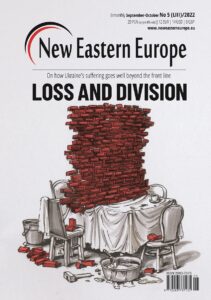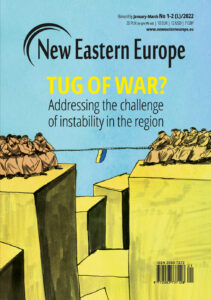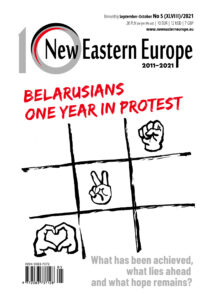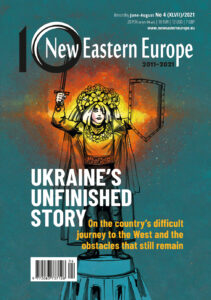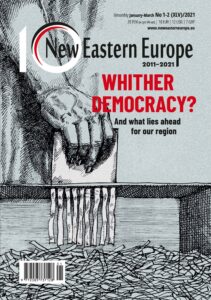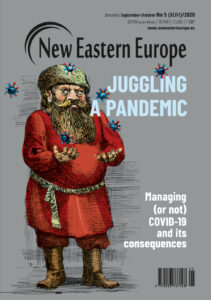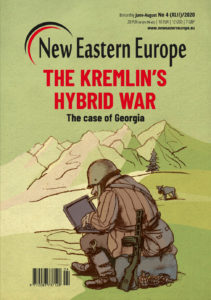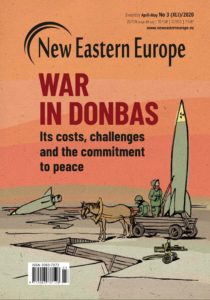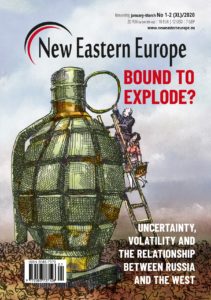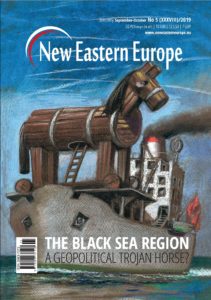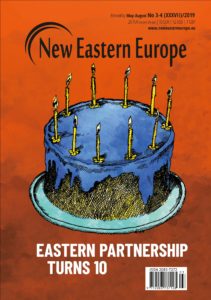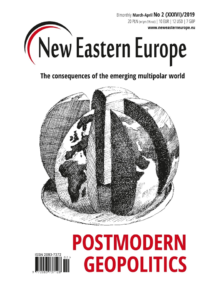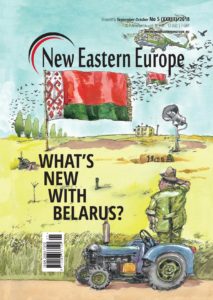The ongoing German-Polish NATO nuclear sharing nexus
The future of NATO’s nuclear sharing programme in Central and Eastern Europe is closely connected to the political relationship between Washington, Berlin and Warsaw. Dimensions such as geopolitics and infrastructure must also be taken into account.
July 1, 2021 -
Aaron Allen
-
Articles and Commentary

Long range nuclear ballistic warhead missile sitting in silo. Photo: Eric Poulin / Shutterstock
In the last days of the Trump administration, an intriguing diplomatic row played out on Twitter between ambassadors from the United States and Germany. The US Ambassador Georgette Mosbacher had stated that if Germany was unable or unwilling to meet its NATO commitments, including spending two per cent of its gross domestic product on defence, then Washington should move its nuclear capabilities to Poland. German Ambassador Rolf Nikel swiftly responded, saying that “Germany is fulfilling its commitment to NATO and its partner, in line with the coalition government agreement signed in 2018. So any speculation here is pointless”. This public back and forth was a spillover from an ongoing debate regarding the future of NATO’s nuclear strategy on its eastern flank.
The Trump administration attempted to use Poland’s eagerness to host American military capabilities as leverage to push Germany into spending more on defence. Although Trump and his political appointees are no longer in office, questions linger regarding the future of NATO’s nuclear sharing programme in Central and Eastern Europe. Germany’s loss could be Poland’s gain but there remain many outstanding issues for all parties involved to work through in the coming years. Germany, much like Belgium, Italy, the Netherlands, and Turkey, continues to host US weapons. Since 1955, Germany has provided the Tornado, a dual capable aircraft (DCA), to NATO’s nuclear mission. These are stationed at Büchel Air Base. Germany is equipped with approximately 20 B61 gravity bombs that may only be used after an American president authorises their release to NATO. This has always been an uneasy arrangement.
Oscillating support among policymakers for Germany’s role in the nuclear deterrent reflects the domestic population’s more negative views. According to recent polls 85 per cent of Germans support removing the weapons. These concerns have recently made their way back into the Bundestag. Debate on this topic was rekindled when the government made a final decision on replacing the aging Tornado. The chairman of the Social Democrats Rolf Mützenic claimed in an interview that “nuclear weapons on German territory do not increase our security, on the contrary. It is time for Germany to rule out stationing them in the future”. Party leaders Norbert Walter-Borjans and Saskia Esken agreed with this statement while Foreign Minister Heiko Maas made clear his continued support. Supporters of the programme have long argued that Germany’s participation gives it greater influence within the Nuclear Planning Group and helps prevent the proliferation of more nuclear weapons in Europe. As debate continued, the CDU Defence Minister Annegret Kramp-Karrenbauer proposed a “bridge solution”. As a result, a preliminary decision was taken to purchase 90 Eurofighter Typhoon and 45 US F-18 fighter aircraft. According to the decision, 30 of these F-18s will be certified to carry US nuclear weapons. The US had been hoping that Germany would follow their other European counterparts and purchase the F-35 for the nuclear mission.
Deliberations, however, are by no means over. Kramp-Karrenbauer has stated that the Bundestag will have the opportunity by 2022 to weigh in on the final purchasing agreement regarding the nuclear mission. With a federal election happening soon on September 26th, this means that the increasingly popular Greens may very well be a part of the next governing coalition. A party spokesperson recently told Arms Control Today that the Greens “do not want to put Germany on a path of continued involvement in technical sharing arrangements by committing to the procurement of a new nuclear-capable aircraft now”. The outcome of the election may seal the fate of Germany’s long-term role in the nuclear sharing programme. Due to this, there could be plenty of opportunities for Poland in the near future.
Poland’s history and relationship with NATO’s nuclear programme has been one of fleeting intrigue. The country is a participant in NATO’s Nuclear Planning Group and the Alliance’s Support of Nuclear Operations with Conventional Air Tactics (SNOWCAT) programme. Shortly after Russia’s annexation of Crimea and subsequent destabilising activities in Ukraine, Polish officials began publicly considering hosting US nuclear weapons. Then-Deputy Defence Minister Tomasz Szatkowski had told local TV station Polsat News-2 that Poland was “actively working on” being a part of NATO’s nuclear sharing initiative. Despite this, Warsaw was quick to distance themselves from this comment and clarified in a statement that “no work is currently underway… on our country’s accession to the NATO nuclear sharing program”. Szatkowski’s comment, however, reflected internal conversations among defence officials on how to best deter Russia, as well as Poland’s potential role in shoring up NATO’s eastern flank.
Over the last half decade, Poland has been the centrepiece of an enhanced US and NATO conventional presence in the region. There have been increased rotations of Alliance forces in the country and the recently signed US-Poland Joint Declaration has further cemented the American military’s presence. Poland has also made subtle moves to promote itself as a future nuclear weapons host as Germany continues to dither. Warsaw plans to purchase 32 F-35 fighter jets from the US and is set to host the Aegis Ashore missile defence system. However, is Poland both a plausible and geostrategically sound alternative to Germany?
While the possibility of Poland joining NATO’s nuclear sharing programme is seen as unlikely, maintaining this option may assist the Biden administration with its other objectives. The first major complication is that placing nuclear weapons in Poland would be a highly provocative act against Russia. Furthermore, it runs counter to the 1997 NATO-Russia Founding Act, which stipulates that the Alliance has “no intention, no plan, and no reason to deploy nuclear weapons on the territory of new [NATO] members”. Additionally, Poland currently lacks the necessary infrastructure, such as underground storage vaults, to provide adequate safety shelters for nuclear weapons. Even with these considerations, the Biden administration may continue to quietly discuss the Poland option. Similar to the previous administration, this approach still offers points of leverage on key issues with other nations. Certainly, it keeps the pressure on Germany to maintain its current hosting and spending commitments. The Poland option also shows Russia that NATO’s eastern flank is ready and willing to host US capabilities if there is no successor to the New START treaty. In the coming years, a resolution on these issues will have to be sorted out as Germany makes its final decision and the US and Poland plan how to best realise their respective security interests.
Aaron Allen is a Title VIII Transatlantic Leadership Fellow at the Center for European Policy Analysis.
Dear Readers - New Eastern Europe is a not-for-profit publication that has been publishing online and in print since 2011. Our mission is to shape the debate, enhance understanding, and further the dialogue surrounding issues facing the states that were once a part of the Soviet Union or under its influence. But we can only achieve this mission with the support of our donors. If you appreciate our work please consider making a donation.










